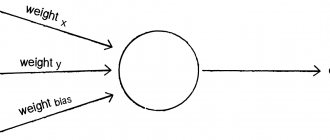Social psychology of conflict
Conflict is a way of resolving contradictions, which consists in the opposition of the subjects of the conflict (usually accompanied by negative emotions).
Necessary conditions for the emergence of a conflict: the presence of oppositely directed motives or judgments among the subjects of social interaction.
If the subjects of the conflict resist, but do not experience negative emotions, or, conversely, experience negative emotions, but do not outwardly show them, then such situations are pre-conflict.
Characteristics of conflict
:
- structure,
- dynamics,
- function,
— typology of conflicts.
Conflict can have both destructive and constructive functions.
Design features:
— contradictions that arose due to poorly organized activities are completely or partially removed.
— it is possible to more fully assess the individual psychological characteristics of people.
- Helps relieve psychological tension.
- a source of personality development and interpersonal relationships.
- promotes self-affirmation of the individual.
Destructive functions:
- negatively affects the mental state of the participants.
- may be accompanied by psychological and physical violence from opponents.
- accompanied by stress.
- forms a negative image of another - “the image of the enemy.”
Structure of social conflict:
Objective components:
- participants in the conflict
— the object of the conflict (the actual cause of the contradiction, resource, idea, power, etc.)
— incident (trigger), development and resolution of the conflict
- micro - environment - immediate environment of the parties
- macro - environment - social groups, the representatives of which are the participants in the conflict.
Subjective components: the positions of the participants in the conflict, their perception of the conflict situation, the image of the conflict situation.
When a person (group) is prevented from satisfying any need, frustration occurs. A person may retreat from their intended goals, or frustration may turn into aggression. When aggression occurs, social conflict develops.
Classification of social conflicts:
G. Simmel and L. Coser, all conflicts can be divided into realistic (generated by objective circumstances) and unrealistic (characterized by the predominance of emotions).
A. Rapoport identifies three main types of conflict: war (“battle”), disputes (“debate”) and games.
All conflicts can be divided into constructive (functional) and destructive (dysfunctional), positive and negative, antagonistic and compromise.
By sphere of manifestation: social, economic, political and organizational conflicts.
According to the direction of influence: vertical (boss - subordinate) and horizontal conflicts (subordinate - subordinate, boss - boss).
According to the degree of opposition: open and closed.
By the number of participants: intrapersonal (“plus-plus”, “plus-minus”, “minus-minus”), interpersonal, intergroup.
Deutsch identifies the following six types of conflict::
As the basis for classification, Deutsch names “the relationship between the objective state of affairs and the state of affairs as perceived by the conflicting parties.”
1) "Genuine conflict."
This is a conflict “that exists objectively and is perceived adequately.” (If the wife wants to use a spare room in the house for painting, and the husband as an office, they enter into a “true” conflict.)
2) "Accidental, or conditional, conflict."
The existence of this type of conflict “depends on easily changeable circumstances, which, however, is not realized by the parties.” (“The genuine conflict” of the previous example turns into “accidental” if we assume that the wife and husband do not notice that there is also an attic, garage or some other room that could easily be converted into an office or studio.)
3)"Displaced Conflict".
In this case, what is meant is an “overt conflict”, behind which lies some other, hidden conflict that underlies the overt one. (The previous example is modified into an example of "displaced conflict" if a vigorous argument over a spare room occurs in an environment where the husband and wife actually have little or no interest in the studio or office, and the resulting clash serves as a manifestation of some other, more serious, perhaps even an unconscious conflict.)
4) "Misattributed conflict."
It is a conflict “between misunderstood parties and, as a result, over misinterpreted problems.” (When, for example, a child is reprimanded for something that he was forced to do while fulfilling the instructions of his parents.)
5)"Latent Conflict".
This is a conflict “that should have happened, but does not”, since for one reason or another it is not realized by the parties.
6) "False conflict"
This is a case when there are no “objective grounds” for a conflict, and the latter exists only due to errors of perception and understanding.
The most typical parties to the conflict are, apparently, individual aspects of personality, individuals themselves and social groups. In terms of this classification of parties, conflicts of the type are possible: aspect of personality - aspect of personality, personality - personality, personality - group, group - group.
Dynamics of conflict:
a) the emergence of an objective conflict situation;
b) awareness of an objective conflict situation;
c) transition to conflict behavior;
d) conflict resolution.
Conflict resolution:
- by transforming the most objective conflict situation
- by transforming the images of the situation available to the parties.
Ways to resolve conflict:
— Arbitration is the presence of a situation where the conflicting parties have confidence in a third party (arbitrator), who resolves the conflict. This person must have a sufficiently high status so that his decision is binding on both parties to the conflict.
— Mediation (mediation, organization of the negotiation process).
— Resolution of the conflict in itself (due to the death of the opponent, disappearance of motivation, etc.).
Characteristics of socio-psychological conflict
In university curricula, titles of textbooks and manuals, two concepts are currently used as synonyms: “psychology of conflict” and “conflictology.” It is strange to approach psychology and its teaching with strict formal requirements, but I would like to object to the unification of these two concepts into one whole. Historically and meaningfully, they have completely different roots.
The psychology of conflict is a young, poorly formed branch of scientific knowledge that arose at the junction of social psychology,
203
sociology and personality psychology. It began to take shape in the 70s. XX century in the USSR independently and independently of Western trends as a theoretical
the basics
of studying
such an empirical phenomenon as human conflicts. The two italicized words are important to her understanding. With the help of the conceptual apparatus available to these ancestor sciences, the conflict was theoretically modeled and presented as a subject of empirical research. Of course, the question was also raised about approaches to resolving the conflict, but this question was an applied one. That is, in the foreground is the creation of a theoretical model and approaches to research, and then the application of scientific data to the surrounding reality. And if the scheme is good, but the real conflict is still not resolved with its help, this is a problem with reality itself. However, I would not like the reader to see behind this irony a disregard for the existing achievements of this discipline. Through the works of L.A. Petrovskaya, F.M. Borodkin and N.M. Koryak, the everyday phenomenon of conflict was transferred to the level of a specific phenomenon, with its inherent properties and patterns of development, from which general methods and approaches to resolution logically followed. Another thing is that the applied attitude of conflict psychology to the practice of resolving specific life contradictions made such practice ponderous, cumbersome, although scientifically thought out.
It is typical for our culture, including scientific culture, to indulge in thought about the “why” and “why” before moving on to the practical question of “how”. The psychology of conflict is built on this principle.
Conflictology arose in the 60s. XX century our century in Australia and began to spread thanks to the support of UNESCO. Despite its serious name, conflictology has never been and never aspired to be a science. It is a social practice focused on helping people resolve conflicts that arise. Naturally, she operates with some generalized schemes, but they are like a scientific product
204
would not have withstood even basic scientific examination. Conflictology carefully collects, systematizes and actively uses two types of methods: helping people themselves or with the help of a mediator resolve their conflicts and teaching them a style of constructive behavior in conflicts. We will talk more about conflictology, but now let’s turn to the theory of socio-psychological conflict, consider its structure, dynamics of development and reasons for its occurrence.
Model of socio-psychological conflict
Socio-psychological conflict is a special type of interpersonal and intergroup interaction. What are its main properties?
Socio-psychological conflict (SPC) is a type of relationship - interpersonal, individual and group, intergroup - which is based on an objective contradiction of goals, interests, and opinions of the participants. At the psychological level, this contradiction manifests itself in strong negative experiences of the participants in relation to the situation, opponents and themselves.
There are three important points in this definition for understanding the essence of the SEC. Firstly, the conflict can unfold in various systems of social relations, but it is not worth considering intrapersonal conflict within the framework of the model that will now be revealed to the reader. Undoubtedly, it is also built on an objective contradiction in the system of a person’s personal orientations, but further analogies are incorrect. Secondly, in the scientific and actually conflictological, practical aspects, not everything that the mass consciousness calls a conflict - quarrels, disagreements, misunderstandings, disagreements, etc. - is such. SEC is a special type of relationship, built precisely on compatible, oppositely directed tendencies.
205
And thirdly, not every objective contradiction turns into a conflict. It must go some way from the contradiction itself to the conflict as a psychological reality, an important component of which is the experiences of the participants. In their sign they are in the vast majority of cases negative. And this fact - the presence of acute negative experiences - determines a lot, makes the conflict what it is for each of us - a test, a difficult moment, a painful prospect for the development of relationships. Emotions confuse a lot of things, transform initial contradictions, and make the process of resolving long-term, “chronic” conflicts a professional art.
The contradiction underlying the socio-psychological conflict gives rise to the so-called “objective conflict situation”. This is the basis of the future problem. An objective conflict situation has its own obligatory structure, which can be graphically depicted as follows:
The two main structural components are the parties to the conflict and its object. The side of the conflict is represented by specific people and their goals, which are close within one side and are in conflict with the goals of opponents - those who make up the other side. There can be many, even very many, parties to a conflict; at least two parties. Each side takes a specific position
. The position in this case is a more or less accurate and reality-corresponding answer of the participants to the question why I (or we) are participating in the conflict, what I
206
(we) achieve. Internal position
- this is a set of motives, real interests, values that encourage a person or group to participate in a conflict.
These driving forces are not always recognized by the participants themselves, and even less often they are presented to others. an external position
to himself and, naturally, to opponents and observers . It represents a motivation that sounds socially and personally quite acceptable, so that it is not a shame to present it to the world and it is not difficult to believe in it yourself. Concealing one’s internal position does not always indicate a person’s duplicity or his repression of inadmissible desires. As we know, awareness of motives is a difficult work of the soul, a special reflexive process for which during a conflict there may not be enough time or mental strength.
An SPC object is a real or ideal object that all participants in a given interaction strive to possess. This object has two “unpleasant” properties, which turn it into the epicenter of controversy. He is indivisible
, at least at first glance, and, according to opponents, can belong only to one side, entirely.
And it has varying degrees of accessibility
for participants. Everyone tries, using the means at his disposal, to make an object more accessible to himself and less accessible to others. It is very important that if an object is practically inaccessible for one of the participants, this in no way means that he is about to be defeated. It’s just that his conflicting steps will be more acute, his actions will be extreme and escalate the conflict.
An interaction based on such a structure has many chances to turn into a real psychological conflict. This is possible if the objective contradiction goes through the stages of identification and formation of a subjective image of the conflict situation .
In this case, under identification
refers to the identification of persons who hinder the achievement of the goal. A person included in a system of objectively contradictory relationships with other people
207
or a group, may not realize this for quite a long time. However, at some point, his steps to achieve a goal that is significant to him turn out to be impossible or ineffective. A state of frustration arises.
A person can attribute the cause of what is happening to completely different phenomena: to himself, to (impersonal) circumstances, to specific people. If a person attributes the reason for his failures in achieving the desired object to other people, identification will arise, leading further to conflict. In this case, the identification may be true
and
false
. In the first case, as the name suggests, the person correctly attributed the cause of frustration to another person. This person (or group) is really his opponent and claims the same object. In case of false identification, the opponent is chosen incorrectly. But if conflict actions unfold towards him in all their splendor and the false opponent is emotionally drawn into a conflictual relationship, a so-called false conflict arises, imitating the real one in all its manifestations. But it is much more difficult to solve it, since there is no objective basis behind it, except for expressed emotional rejection.
208
So, psychologically, conflict begins with the fact that people react to each other as an obstacle blocking the achievement of significant goals. Conflict is a mechanism that can eliminate or reduce this block, that is, create conditions for achieving a goal.
The next step in transforming an objective contradiction into a psychological conflict is the formation
Opponents have
an image of a conflict situation
. The subjective image of a conflict situation includes an idea of oneself in a conflict (goals, values, opportunities), opponents, and the situation within which conflict interaction develops. A person not only reacts to a situation, he defines it for himself, thereby setting its properties. In conflict, people do not interact with each other and not in a real context. Their behavior is mediated by images of a conflict situation, which may more or less coincide with some objective reality: the real goals and capabilities of opponents, their own real positions, objective properties of the environment.
So, in subjective images of conflict, a person creatively processes the initial situation of contradiction. This transformation often complicates the successful resolution of the conflict, which allowed a number of authors, in particular A. Ya. Antsupov and A. I. Shipilov, to talk about the distortion of the objective conflict situation, which occurs in its subjective image. They identify several main directions of distortion.
Schematicization, simplification of a real conflict.
Conflict relationships between people, like any other, are multifaceted. They are broader than any contradiction, and many of their aspects, even in the most difficult situations, can remain emotionally attractive. Since conflictual relationships are extremely expressive, require a lot of mental strength from a person and there is not enough of it to analyze the diverse aspects of relationships, an unconscious tendency arises towards a subjective narrowing of relationships. A person selects and concentrates on one of the lines of relationships, the one where it is easier for him
209
only to develop a conflict, and ignores other lines. The relations between the opponents seem to be flattened. Let us also note that a close, but even less constructive tendency is the stereotyping of relationships. Leo Tolstoy noted that if happy families are happy in very different ways, then all unhappy families are similar to each other. I think he had in mind primarily conflict families. If you look at the causes of marital conflicts, there are very few of them. Enough fingers on two hands. It turns out that in harmonious relationships a person is free and very individual, but in conflict interaction he strives to establish primitive, stereotypical relationships that develop according to long-known scenarios. Scenarios that have been played out many times in this world, written in plays and jokes.
Distortion and reduction of the perceived prospects for the development of interaction.
In the minds of the participants, conflicting relationships seem to freeze, lose their future, although in many cases they are not so easy to stop. The main danger of this kind of distortion is that opponents, when performing their actions towards each other, do not calculate and ignore their consequences, which leads to an escalation of the problem.
Polarization of assessments and judgments.
Black-and-white, categorical judgments begin to apply in relation to your partner’s own behavior and intentions.
Communication distortions.
In the communication of opponents, various barriers are triggered, which filter and distort information, giving the spoken words an imaginary meaning.
Attributional distortions.
They manifest themselves in attributing motives, personal qualities, intentions to themselves and others, and in simplifying relationships. They explain their actions by saying that they are the only possible ones in this situation, or forced, or “he asked for it himself.” The opponent's actions are classified as malicious and initially erroneous. In the process of conflict development, the opponent’s shortcomings and negative personality traits are often exaggerated,
210
one’s own image crystallizes and acquires noble traits: compliance, readiness to cooperate (11).
As a result of the processes described above, a socio-psychological conflict is born from an objective situation of contradiction. It is born and begins to live and develop according to its own laws. In the theoretical model developed in Russian psychology by L.A. Petrovskaya, the SPC goes through 4 successive stages of development:
the emergence of an objective conflict situation;
incident;
conflict actions;
outcome (78).
At the first stage, the conflict as a psychological reality is not yet presented. However, its real germ already exists in business and interpersonal relationships. Under certain conditions, people, having begun to act and become convinced of the ineffectiveness or impossibility of these actions, will face the need to somehow explain this frustration to themselves. Incidents are forms of frustration. These are various events that demonstrate to the participants in the interaction the existence of some problem: they did not understand each other, did not understand, did not share, etc. The essence of the problem itself may still be far from clear, but tension, disagreements, and quarrels arise. It is at this second stage that false or true identification occurs and an image of conflict begins to form.
H. Cornelius and S. Fair identify 5 signals of conflict. Each of these can be considered a form of incident:
a crisis
- temporary or final break in relations;
voltage
- negative attitudes and preconceived opinions that distort the perception of a partner’s words and actions;
misunderstanding
- false conclusions that arise in the absence of mutual understanding;
discomfort
- an intuitive feeling of discomfort, often at a physiological level;
211
skirmishes and quarrels
— actions of participants signaling the existence of a conflict (46).
We see that an incident can exist both in an external, open form - quarrels, crisis - and in an internal, psychological one. In the latter case, a person either realizes the existence of a conflict or simply experiences it emotionally, but does not in any way show his feelings and his knowledge in real relations with his opponent.
From personal experience
In elementary school, most of the child’s conflicts with adults unfold on his part in a hidden form, since he is not ready for open confrontation. A student may be very worried about his relationship with his parents or teacher, suffer from the inability to do something (this has a detrimental effect on his well-being, health and studies), but not commit any conflicting actions in relation to significant people. In the “troubled years” of early adolescence, when the child’s traits of the “correct” age and the rising “rebel” are intricately and sometimes tragically intertwined, readiness for open conflict can to some extent be considered as an indicator of personal maturity. And absolutely - as a condition for maintaining emotional stability. In his works of the 80s. XX century E. V. Novikova convincingly showed that school and, in general, personal anxiety of primary schoolchildren and young adolescents are a consequence, relatively speaking, of the internalization of external socio-psychological contradictions that are insoluble for children. The most harmful are the following 3 groups of such contradictions:
between the systems of demands of significant people (moms and dads, mothers and grandmothers, a little later - close friends and family);
212
between the demands of significant people and the needs and desires of the child or adolescent himself;
between the demands of significant people and the child’s capabilities.
A teenager is much more prone to open social conflicts, quickly transferring emerging contradictions into the area of active conflict actions and relationships. As a stage of personal and socio-psychological development, such a tendency is quite natural and progressive. Another thing is that the ability to reflect and plan one’s actions lags behind in the pace of its development. And the teenager quickly plunges into the expression of open conflict “war”.
The stage of conflict actions is central in many respects. At this stage, relations between opponents are rapidly developing, which leads to changes in almost all structural links of the conflict situation, changes the participants themselves, their positions, the object and the situation around the conflict.
The object of the conflict tends to grow, covering objectively non-contradictory areas of relations. Initially a business, essentially working contradiction, without any objective grounds, suddenly spreads and begins to determine people’s personal relationships (“Why work there - I don’t want to see him!”). Family conflict from the area of relationships with the parents of the husband or wife smoothly extends to raising children, spending free time, and intimate relationships (they are very often the first to suffer). As a result of the actions of the participants, the level of accessibility of the object changes. The struggle for accessibility is an important point in the behavior of participants at this stage. F. M. Borodkin and N. M. Koryak characterized its essence using the so-called rank theory
.
Each person who is in a state of conflict with other people has some conditional power - rank.
213
Rank is a set of personal, status, material and other resources that a person can use to win. The higher it is, the greater the chances of playing out a conflict situation in your favor. There are 5 ranks:
> first - the conflict participant speaks on his own behalf: I think, I believe, I want.
> second - the participant in the conflict represents some small group: students of our class, young employees of our department, our family wants, believes, thinks, etc.;
> third - the conflict participant speaks on behalf of some system of groups, a large group: we, adults; us, teachers, etc.;
> fourth - a participant in the conflict has the opportunity to speak on behalf of the social system, all progressive humanity, to personify culture, morality, world experience, folk wisdom, etc.
There is another rank - “zero”, more about it below.
As we see, power increases in proportion to the size and authority of the “support group” that one or another opponent was able to assemble. At the same time, it is not necessary that all these groups actually chant behind his back; it is enough to have status or other reasons to refer to some ideal community. Consciously or unconsciously, opponents strive to increase their own rank and reduce the rank of their opponent. The most desirable outcome of such a struggle is to drive the other into a zero rank, almost hopeless from the point of view of the fight for victory. Rank No. 0 is the rank of a violator of some social norms. Remember, the “last and decisive” argument in a confrontation on public transport: “And you, with glasses, keep quiet.” After this, all that remains is either to defend your right to wear glasses, forgetting about the subject of the previous dispute, or to get into a fight. In order to place an opponent in the shameful zero point, you need to remember in time the recent history of some of his mistakes, find a flaw in his past, present and
214
future, appearance, etc. Zero rank will neutralize one of the participants in the conflict for some time and give the other an illusory feeling of victory (23).
At the stage of conflict actions, the conflicts themselves begin to swell, capturing more and more new people. Thus, an interpersonal, pair conflict almost always flows into an intergroup conflict (due to the fact that each party organizes a support group for itself). In general, this stage puts a lot of things into place, and the expansion of the number of participants does not occur due to extra people being drawn into it, but simply because all interested parties finally appear. In a mother-child-father conflict, grandparents can appear as an important independent party; in a co-worker conflict, the boss or a neighboring department can appear.
Being dramatic and tense, the third stage cannot last very long, and the conflict floats to the outcome stage. In general, we can talk about two great possibilities for resolving the conflict: creating conditions that prevent further incidents, and resolving the objective contradiction itself.
Removing an incident is an attempt to extinguish the conflict either by transferring it to the stage of awareness (without conflict actions) or to the stage of an unconscious conflict situation. The following methods are possible:
Ensuring that one of the parties wins.
In this case, the conflict is resolved completely if the losing side accepts its defeat, which is extremely rare in everyday practice. The victory of one side is always a temporary state that lasts until the next serious incident.
Resolving conflict with lies.
This method transfers the conflict into an unconscious form and gives the parties a delay in solving their problems.
In this case, people act on the principle of “no incident, no conflict” - a deeply rooted misconception in our culture. Relationships that are fundamentally objective
215
contradiction, undermine the personality of each participant from within, as we can already see from the example of childhood anxiety, affect the effectiveness of activities, and gradually destroy the relationships themselves.
Changing Target Settings
at least one of the participants. A situation when one of the parties, due to circumstances or as a result of negotiations, no longer wants to possess the object of the conflict.
The disappearance of the object of the conflict itself
at the will of the participants or against their wishes. One of the most striking examples in Russian history is the conflict between Stepan Razin and his squad over the princess (the object is the princess). The method of resolving the conflict was chosen to be quick and irreversible: “And she is thrown overboard into the oncoming wave...”
Other options are also possible: a change in the structure of the “opponent-object” relationship in terms of accessibility or divisibility: “opponent-opponent” in terms of ranks, etc. The following types of outcomes are most common at the level of an objective conflict situation.
Complete physical or functional separation of participants.
In this case, the very basis for conflict really disappears, but conflictual relations between former opponents can persist for a very long time, since they did not receive their reaction. In addition, such a path can rarely be implemented in real practice.
Internal restructuring of the image of the situation.
The meaning of this measure is to change the internal system of values and interests of the participants in the interaction, as a result of which the object of the conflict itself fades in their eyes or the relationship with the opponent acquires personal significance. Such work is psychologically very complex, often requiring assistance from a specialist psychologist, but this is the path that can lead to a constructive resolution of marital or family conflicts.
216
Conflict resolution through confrontation to cooperation.
In its content, this outcome is close to the previous one, but, as a rule, concerns business conflicts that do not affect the deep relationships of people, but relate to their social or material interests. Such conflicts can be resolved through specially organized work to find common interests and goals, by narrowing the area of disagreement to a minimum and concluding cooperation agreements. The participation of a mediator with special skills in negotiations and dispute resolution plays an important role.
At the outcome stage, the “duplicity” of conflictual relationships is most clearly visible. Every conflict is fraught with two possibilities: destruction and creation, a point of growth and a point of fall. In social psychology, this fact is usually referred to as the constructive and destructive functions of conflicts. In everyday psychology, conflict is most often represented by its destructive side, therefore conflicts are avoided, and conflict-free communication is considered a value. But let's define the concepts. Social life is complex. Living your life among people without getting into situations of objective contradiction is only possible if you do not pursue any personal goals at all. This, fortunately, is an extremely rare case. Consequently, conflict-free communication is communication in which all conflicts are simply suppressed, driven inside, undermining relationships from the inside. If relationships are not sorted out, they end, often unexpectedly and dramatically for the participants who so wanted peace and quiet. And here is another misconception: that a conflict is necessarily a war, a riot of negative emotions. Of course, developing relationships are rarely calm, they are characterized by ups and downs, points of greatest rapprochement and disagreements, but these relationships are alive, since they are fueled by psychological conflicts experienced, identified and successfully resolved by people.
217
In general, the constructive function of conflict boils down to the fact that it:
□ is an important source of development of the individual, group, as well as interpersonal relationships, allowing them to rise to new heights, expand and change the scope and methods of interaction;
□ through open confrontation, frees the group from factors that undermine it, reduces the likelihood of its stagnation and decline;
□ promotes the development of mutual understanding between participants in interaction.
We see that the theoretical schemes for analyzing conflicts, developed in Russian psychology, give a fairly complete idea that there is a conflict between people. With their help, we can also formulate some general recommendations for practical work with real conflicts: understand what conflictological possibilities are fraught with each stage of conflict development, and develop a scheme for the primary analysis of a real conflict. First, about the possibilities of building work with conflict at various stages.
As already mentioned, conflict is valid only where people cannot simultaneously realize their goals, since they, say, claim the same object, or there are only enough funds to satisfy one of the goals, or the achievement of goals by one automatically means the defeat of the other . Any of these situations must be addressed
, since exhortations, good intentions to “sort it out amicably” and other similar measures cannot cope with the conflict.
Another important circumstance: when faced with a situation of objective contradiction, many people, and this is normal, stop perceiving it detachedly, they begin to experience ,
mostly negative emotions: fear, anger, irritation, resentment, indignation, rage. Emotional stress—our violent experiences—transforms an objective contradiction into a psychological conflict, some
218
a vivid subjective reality for everyone who is somehow immersed in this situation. And at this stage, it is no longer enough to resolve the conflict (that is, logically, reasoning sensibly, look for ways to overcome the contradiction), you need to work
: find opportunities for emotional response and processing of feelings, motivate yourself and others to individually and jointly analyze the situation, look for ways to solve and implement these decisions...
Of course, it’s great if you manage to “catch” a conflict at the stage of an objective conflict contradiction and resolve it at the level of negotiations, receptions, friendly dinners, etc. At this stage, it is still possible to distance yourself from the situation: “Colleague, I respect you very much, but our common cause is in danger. You see, there is a real contradiction in our approaches to...” But it’s not easy. Most often, we lack special knowledge from the field of conflictology, scientific and everyday ideas about what factors underlie conflicts. In most cases, our own feelings tell us that we are in conflict: tension, confusion, irritation with a partner, dissatisfaction with events and relationships... This means that the conflict has entered its second stage - the stage of the incident. If partners are lucky enough to survive the emotional wave without starting “military” actions, and quickly get to the root cause of the incidents, working with the conflict can be productive and short. People have not yet had time to deal blows to each other’s self-esteem. But this is not easy either. We often lack the emotional maturity and simple human wisdom to decide what is more important: relationships or achieving a given goal, and how they can be combined.
Having not been worked through at the incident stage, the conflict easily moves into the stage of conflict actions. Its essence is in an attempt to win, that is, to resolve the situation in one’s favor. The idea is inherently unproductive and often utopian: in conflict there is practically
219
You cannot win forever, any victory is temporary, only a long-term solution.
If conflict management work began at the stage of conflict actions, the first thing that needs to be done is to return all participants to the 1st rank. This is very difficult, but only where people speak on their own behalf will they be able to agree and understand each other.
What the outcome looks like depends on the direction of effort chosen by the participants in the conflict interaction. The conflict can become protracted, sluggish, with rare outbreaks of “trench warfare” and complete hopelessness for the development of relations. It may gradually fade if people end their partnerships or business relationships. Finally, the conflict can be worked through and resolved. In business relationships, this is most often achieved through negotiations conducted within the framework of a “win-win” strategy, otherwise known as cooperation. Emotional conflicts in close, partner relationships are more often resolved through the restructuring of each participant’s personal value system, choosing in favor of relationships rather than this specific goal in its specific form.
Based on our theoretical knowledge about the structure and development of conflict, we can propose the following scheme for the primary analysis of conflict in practical work:
Participants (parties) to the conflict
: who is in conflict?
Object of the parties' claims
: What are they conflicting about?
Declared goals of the parties
(external position): how do you explain to your opponent, people around you, and often to yourself the reasons for entering into a conflict relationship?
Needs and concerns of the parties
(internal position): what motivation, what personal meanings are actually behind participation in the conflict?
Opponent-Object Relationships
in terms of accessibility and divisibility.
220
Opponent-opponent relationships
in terms of ranks.
Changes in the parties and the object as the relationship develops
: new participants appeared; conflicts arose in the camps of former like-minded people; the formulation of the external position has changed; there was a restructuring of values and meanings; the means became the end; the object of the conflict itself and others have changed.
The chosen method of conflict resolution
: How did it all end?
Evaluation of the chosen method by each party
: What do the participants themselves think and feel about this?
It would seem that we can put an end to this and move on to the actual practice of conflict resolution. However, this scheme is missing one last point. Ignorance of the information contained in it makes analysis of the conflict according to the scheme ineffective. Much in the development of a conflict and ways to resolve it depends on its origin. And we move on to consider the types of socio-psychological conflicts and the reasons for their occurrence.










